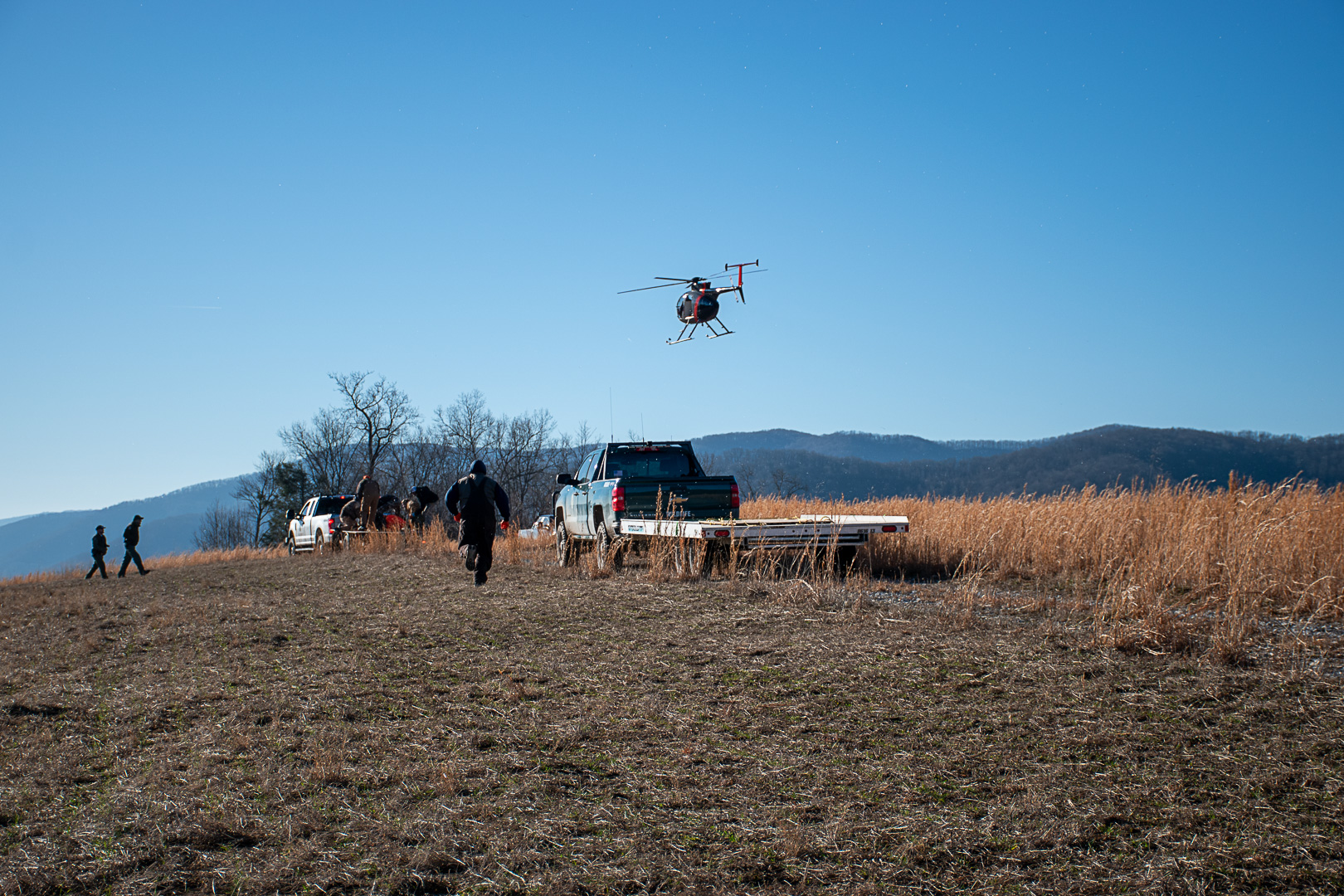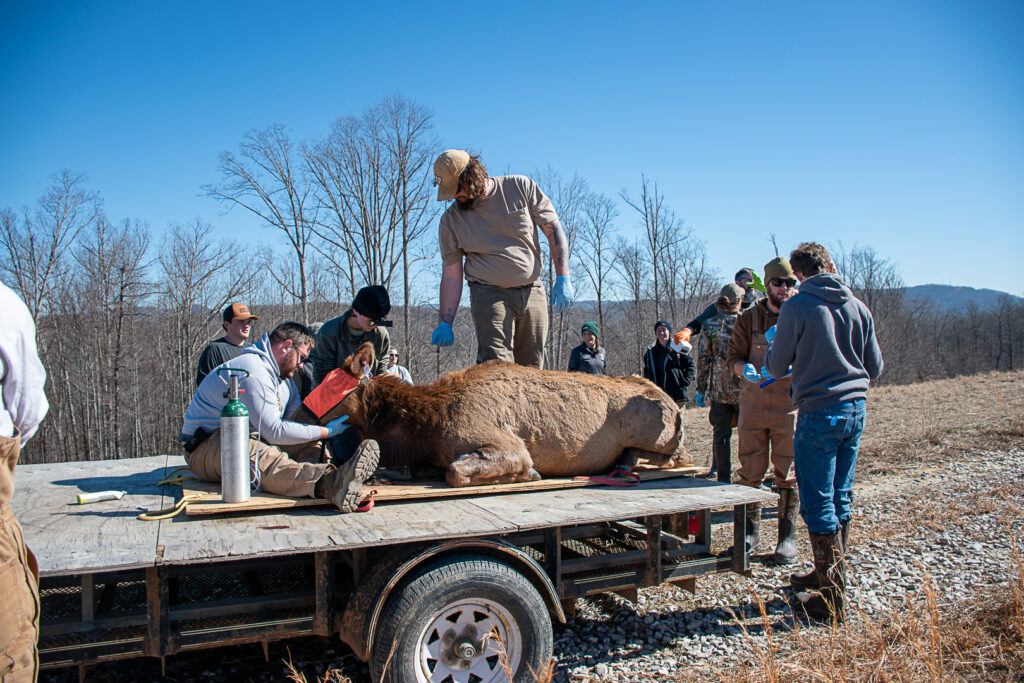
The UT School of Natural Resources worked with the Tennessee Wildlife Resources Agency (TWRA), the Rocky Mountain Elk Foundation (RMEF), and the Kentucky Department of Fish and Wildlife Resources to capture elk with a helicopter crew in Feb. 2024 for a collaborative study looking at elk reproduction rates and the survival of their calves into adulthood in East Tennessee.
“Historically, the reproductive rate has been low, but this year was incredible because all the cows we captured were pregnant,” said Professor Lisa Muller, who helped lead the study with Assistant Professor and Extension Wildlife Health Specialist Dan Grove.
The captures took place in the North Cumberland Wildlife Management Area. Similar to a deer monitoring study conducted in West Tennessee, the helicopter crew caught the elk with a net gun and then put hobbles and eye coverings on them before carrying the elk to ground crews.
Once back on the ground, researchers injected the elk with a sedative and monitored their heart rate, respiratory rate and temperature. They then collected samples and tagged and collared the elk. Ultrasound was used on all elk to assess for pregnancy, and vaginal implant transmitters (VITs) were placed in pregnant cows. They captured 15 pregnant females and placed 10 collars and VITs. The VITs come out once the elk gives birth, and it communicates with the collar on the cow, signaling a possible birth event with the GPS location via a text message. They’re also using the collars to collect movement and habitat use data.
Assistant Professor Dan Grove added, “We are doing basic disease surveillance in conjunction with the study to contribute to the long-term disease screening of this population.” Parasitology Associate Professor Rick Gerhold’s group with the UT College of Veterinary Medicine (UTCVM) performed the disease screening with funding from TWRA.

“TWRA has been dedicated to working with partners to restore the elk population that once roamed in Tennessee, and today we have more than 400 in the herd,” said TWRA Director of Communications Emily Buck. “In addition to the benefits of restoring biodiversity to the landscape, the elk herd also provides exciting wildlife viewing opportunities for Tennesseans and visitors who come to hear elk bugle in the fall or visit the Hatfield Knob Elk Viewing Tower for a chance to see elk at North Cumberland Wildlife Management Area.”
RMEF paid for the helicopter crews and provided volunteers. RMEF Certified Biologist Will Bowling said, “This research will help fill any gaps in our knowledge about the Volunteer State’s elk herd. Information from this study will help wildlife managers refine strategies to sustain this elk herd into the future while also providing a better understanding of elk population dynamics across the broader Appalachian region.”
UTCVM Clinical Assistant Professor Julie Sheldon’s group joined the study along with several other UT SNR wildlife and fisheries students. Grove called the study a “great learning opportunity and life experience for all involved.”
